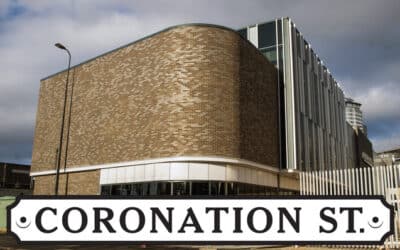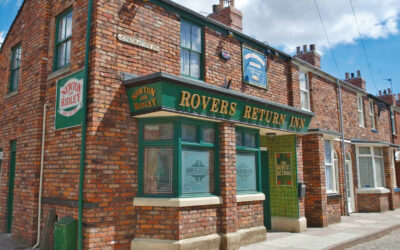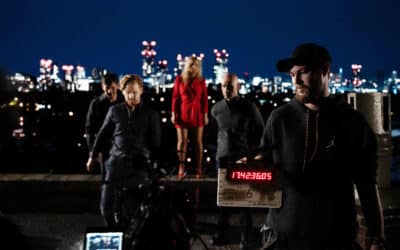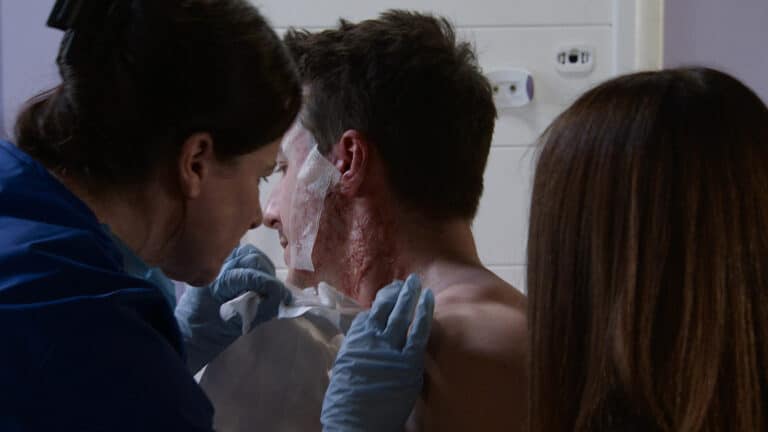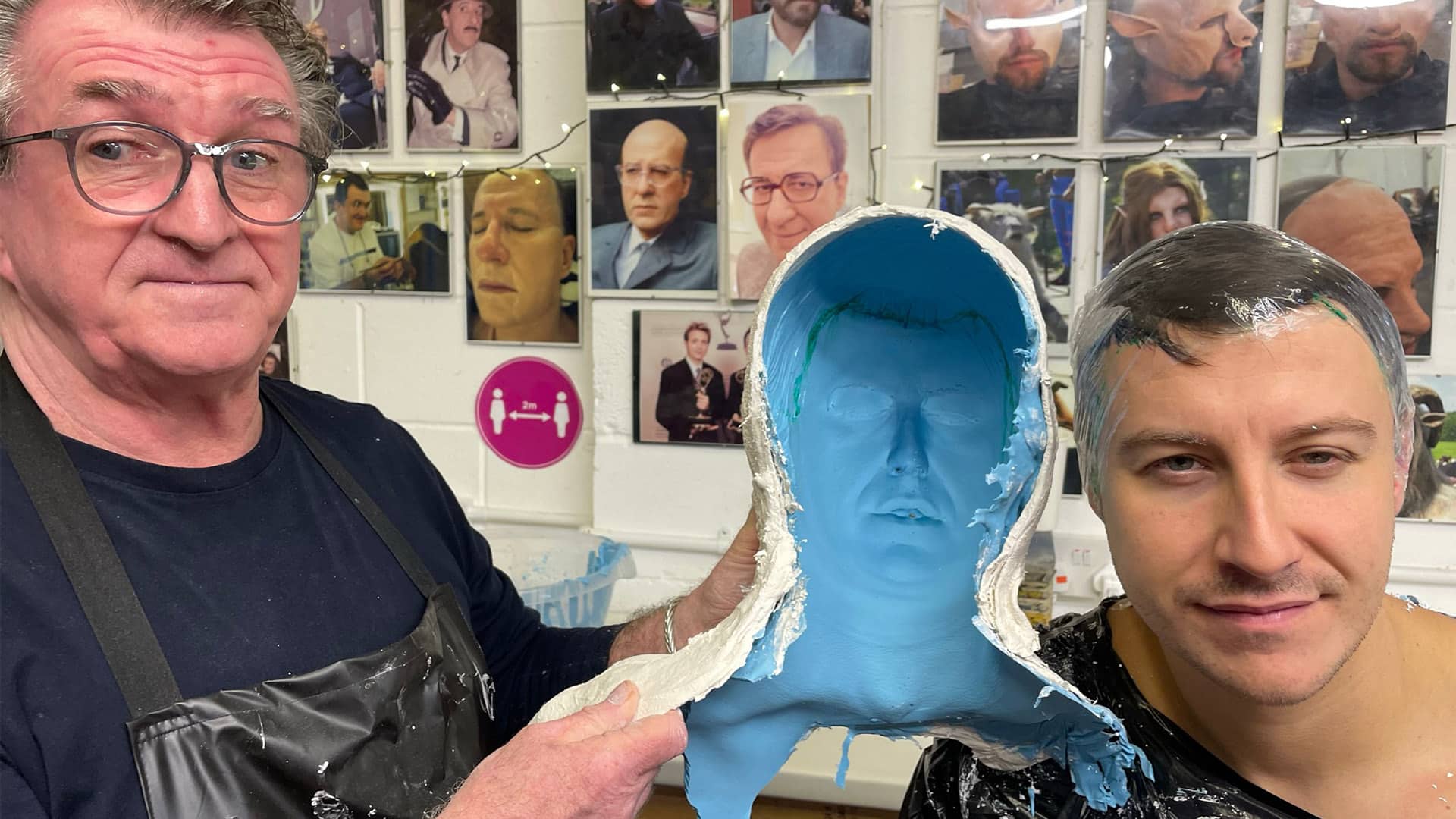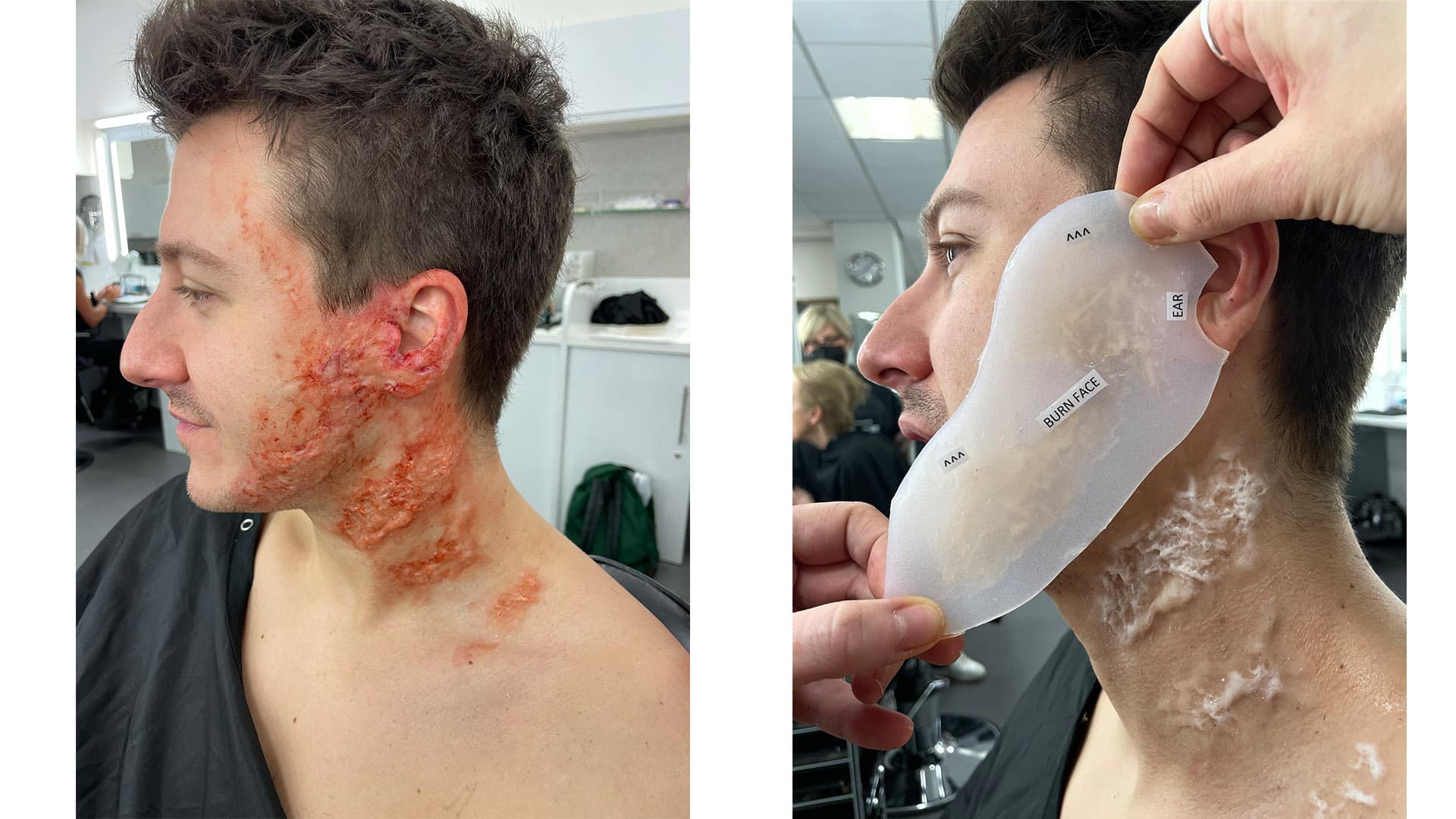Working on the prosthetics were Birkenhead-based Davy Jones (Makeup Prosthetics Designer) and Beks Scott (Makeup Prosthetics Supervisor). They’ve done projects including Dr Who and Pirates of the Caribbean.
They explained the process of how they made the prosthetics, which started with a face cast of the actor.
“Once we had done this, I passed this job on to Beks who sculpted all the stages of the burns and we would send them to Gillian and ask, “What do you think of this? Do you like this shape?” We have worked on a prosthetic for an acid burn before but with Coronation Street it was about finding balance between being medically accurate and not being too shocking for a soap drama,” said Jones.
“Beks sculpted a number of different prosthetics of skin under different stresses and textures. After we made a mould of all the pieces, we put a prosthetic material inside which sets and then transfers to Ryan’s skin. For all the different stages, like when Ryan has to have a skin graft, Beks will resculpt and make a new piece of prosthetics that fits a certain thing. Beks is very clever at making the moulds fit together like a jigsaw or like Tetris really, so once the first mould goes around Ryan’s ear, the next mould locks into that and the next mould locks into that so everything is always in the right place. For the colouring of the burns, it’s great when you do it free hand if it’s a one-off makeup but when it’s for a show like Coronation Street, you have to recreate that colour all the time… it’s like trying to paint a Picasso every day! So we had to be conscious of keeping a basic continuity. Most of the time carry a project like this through and we would be in, on-set, everyday but that is just unrealistic for a show like Coronation Street so it was important to create something that the Coronation Street makeup team would be able to recreate.”
That was underlined by Walsh:
“It takes us an hour and two people from the team to prep Ryan’s skin and apply the SFX burns. The Bondo in the silicon moulds has to set overnight so it’s a working progress at all times, even the day before. Then the pieces are applied to Ryan’s face, when they are peeled off you are left with a 3D transfer that’s sculpted, a bit like a transfer tattoo but 3D.
“Then we apply the colouring. This is to make the prosthetics the colour of real life skin burns. The reason why the prosthetic ‘skin graft’ looks the way it does is because it would have been taken from a different part of Ryan’s body, as if it’s real skin. It then takes two people to remove the prosthetics in half an hour, we do this by using hot flannels and special makeup removers on Ryan’s skin. It’s important to look after Ryan’s skin and look after the actor.”
Ryan Prescott, who plays Ryan Connor explained the impact it had on him:
“People say to me, “It must really help with the acting,” but to be honest I can’t see or feel the prosthetics when they are on! I have got so used to wearing them now, even on weekends I don’t hold my phone up to that ear or that side of my face anymore! It doesn’t really play into things unless I am looking into a mirror on set and the only time Ryan does this is when he takes the bandages off in hospital for the first time.
“For those scenes, it was really helpful and it didn’t take much to take me to that place that Ryan was in because I am looking in the mirror and I have all these incredible prosthetics on. But other than that, I have just gotten used to it now and I forget the prosthetics are there.”
The team were advised by Paul Blakemore a Charge Nurse from the Regional Burns Unit at Pinderfields Hospital, Wakefield, who’s worked with a number of acid and alkaline attack patients over the last few year.
“The makeup team needed to see how burns look, especially acid burns. I provided the team with photographs of people’s acid burns and skin grafts,” he said.
“It was important for the team to see how skin grafts would appear after placement and I showed the team how the wounds would change over time as burns change a lot. I was there on set, in the makeup room, when Gillian and the makeup team were putting the colouring on the prosthetics and I was blown away by how accurate the prosthetic looked and what a fantastic depiction it is of someone with a burn like that.
“I was also on set, when they were filming, as I was involved in putting the dressings on Ryan so it was an accurate and authentic representation of a burns dressing when it’s on a patient. The researchers also asked me about the accuracy of the narrative, for example the dialogue between the medical staff and Ryan, like when the doctor was explaining to Ryan about skin grafting, so I advised on the terminology used and the care that involves.”
He added:
“Any kind of medical conditions that are highlighted on television are a good thing because it brings the general public more information about them, especially when it is shown as accurately as this storyline is. An acid attack is a horrible thing and we hear about them infrequently but it’s not like someone breaks an arm and once it heals you can’t tell. Once you’ve been a survivor of an acid attack and an assault like this, it’s with you for life and the psychological impact is massive. For Coronation Street to highlight this, is really very good.”

